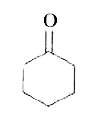Which of the following species have two types of C-C covalent bond length data
diamond
graphite
Fullerene
None of these
The correct Answer is:C
To determine which of the following species have two types of C-C covalent bond lengths, we will analyze each option provided.
Step 1: Analyze Diamond
- Diamond is a covalent crystal with a tetrahedral structure.
- Each carbon atom in diamond is sp³ hybridized and forms four single covalent bonds with four other carbon atoms.
- All C-C bonds in diamond are single bonds, resulting in only one type of C-C bond length.
- Conclusion: Diamond does not have two types of C-C bond lengths.
Step 2: Analyze Graphite
- Graphite has a layered structure where each carbon atom is bonded to three other carbon atoms in a planar hexagonal arrangement.
- Within each layer, the C-C bonds are covalent bonds, while the layers are held together by weak van der Waals forces.
- The C-C bonds within the hexagonal layers are one type, while the interaction between the layers represents a different type of bonding (non-covalent).
- Conclusion: Graphite has two types of C-C bond lengths: one for the covalent bonds within the layers and another for the interactions between the layers.
Step 3: Analyze Fullerene
- Fullerenes consist of carbon atoms arranged in a hollow spherical shape, primarily based on hexagonal and pentagonal rings.
- The structure of fullerenes features only one type of covalent bond (the bonds between carbon atoms).
- Conclusion: Fullerenes do not have two types of C-C bond lengths.
Final Answer:
The species that have two types of C-C covalent bond lengths is Graphite (Option 2).
---
- Diamond is a covalent crystal with a tetrahedral structure.
- Each carbon atom in diamond is sp³ hybridized and forms four single covalent bonds with four other carbon atoms.
- All C-C bonds in diamond are single bonds, resulting in only one type of C-C bond length.
- Conclusion: Diamond does not have two types of C-C bond lengths.
- Graphite has a layered structure where each carbon atom is bonded to three other carbon atoms in a planar hexagonal arrangement.
- Within each layer, the C-C bonds are covalent bonds, while the layers are held together by weak van der Waals forces.
- The C-C bonds within the hexagonal layers are one type, while the interaction between the layers represents a different type of bonding (non-covalent).
- Conclusion: Graphite has two types of C-C bond lengths: one for the covalent bonds within the layers and another for the interactions between the layers.
- Fullerenes consist of carbon atoms arranged in a hollow spherical shape, primarily based on hexagonal and pentagonal rings.
- The structure of fullerenes features only one type of covalent bond (the bonds between carbon atoms).
- Conclusion: Fullerenes do not have two types of C-C bond lengths.
The species that have two types of C-C covalent bond lengths is Graphite (Option 2).
Topper's Solved these Questions
- TEST PAPERSBOOK - ALLENCHAPTER - TEST PAPERSEXERCISE - CHEMISTRY
25 Videos
- TEST PAPERSBOOK - ALLENCHAPTER - TEST PAPERSEXERCISE - MATHEMATICS
2 Videos
- TEST PAPERSBOOK - ALLENCHAPTER - TEST PAPERSEXERCISE - part-2 Chemisty
18 Videos
- TEST PAPER 4BOOK - ALLENCHAPTER - TEST PAPER 4EXERCISE - CHEMISTRY
45 Videos
- THERMODYNAMICS BOOK - ALLENCHAPTER - THERMODYNAMICS EXERCISE - EXERCISE -4
18 Videos
Similar Questions
Knowledge Check
Which one of the following pairs of species have the same bond order?
ACO,NOBO2,NO+CCN−,CODN2,O−2Which of the following have larger C-O bond length than C-O bond length of
 A
A B
B C
C D
D
In which of the following species the bond is nondirectional ?
ANCl3BRbClCBeCl2DBCl3
Which of the following statements is correct for covalent bonds ?
View SolutionWhich of the following statements is false about covalent bonds?
View SolutionWhich of the following species will have intramolecular hydrogen bonding ?
View SolutionWhich of the following contains both ionic and covalent bonding?
View SolutionWhich of the following molecules have both covalent and coordinate bonds ? a)O3 b)N2O c)NH+4 d)H2O
View Solution
